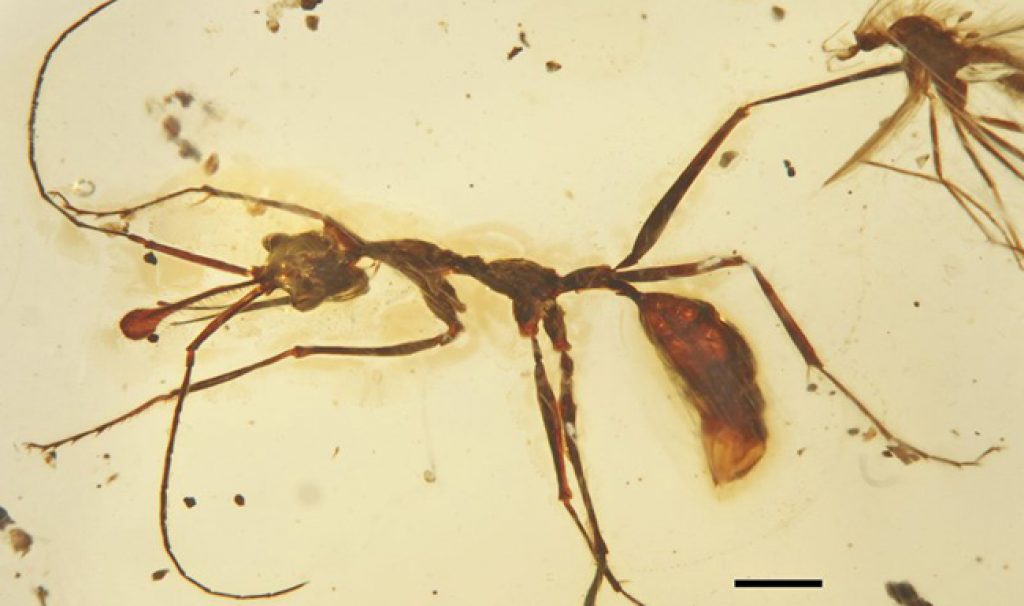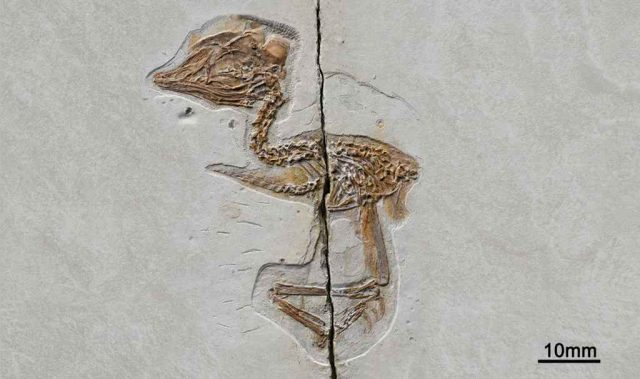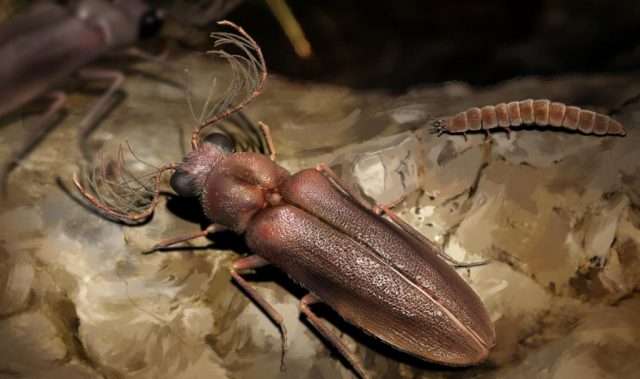
AsianScientist (Jun. 1, 2016) – Researchers in China have discovered a bizarre-looking new ant species from chunks of Burmese amber.
The 99-million-year-old fossil of Ceratomyrmex ellenbergeri has a prominent horn and exaggerated, scythe-like mandibles (appendages) that extend high above the head—presumably used as a highly specialized trap for large prey.
Dr. Wang Bo of the Nanjing Institute of Geology and Palaeontology, Chinese Academy of Sciences, and colleagues describe the new ‘unicorn’ ant species in Current Biology.
Ants experienced early diversification during the Cretaceous period, and their success is generally attributed to their remarkable social behavior. The vast majority of Cretaceous ants belong to the stem-group Formicidae and comprise workers and reproductives of largely generalized facial features.
Not all ants cooperate in social hunting, however, and some of the most effective predatory ants today are solitary hunters with powerful trap jaws. Together with other Cretaceous ant fossils, the new fossil suggests that at least some of the earliest Formicidae were also solitary specialist predators.
The new ant’s prominent horn represents an extreme modification of the clypeus (face), hitherto unseen among living and extinct ants. Its exaggerated features suggest a proficiency for trapping larger prey over smaller, presumably easier-to-subdue prey.
After Ceratomyrmex ellenbergeri went extinct, it would take millions of years for the trap jaw feature to reappear in the lineage leading up to today’s trap jaw ants.
The article can be found at: Perrichot et al. (2016) Extreme Morphogenesis and Ecological Specialization among Cretaceous Basal Ants.
———
Source: Chinese Academy of Sciences.
Disclaimer: This article does not necessarily reflect the views of AsianScientist or its staff.












